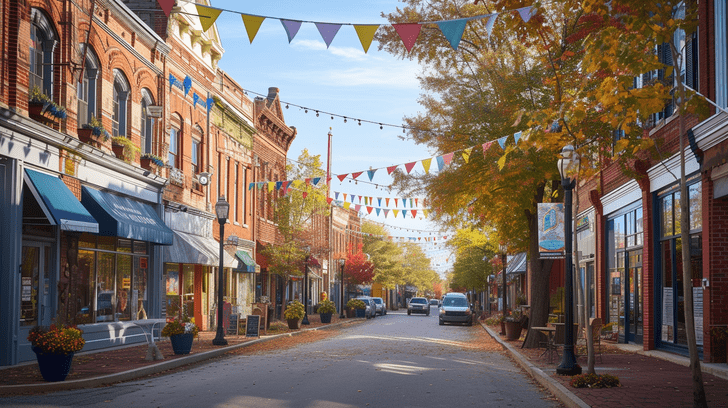
Curious about the Township of the City of Peoria in Illinois? Well, you’re in for a treat as we take a closer look at this intriguing government entity.
Nestled within the boundaries of the City of Peoria, this distinct township carries out the responsibilities of a civil township government. But there’s more to this story than meets the eye.
From its creation to its expansion, the Township of the City of Peoria has undergone significant changes over the years. So, prepare yourself for a fascinating journey through the history, boundaries, and neighborhoods of this unique township.
Township of the City of Peoria: Overview
The Township of the City of Peoria, located in Illinois, serves as a separate government entity from the City of Peoria, carrying out the functions of civil township government within most of the city.
The township has a rich history, created by the Peoria County Board to align with the boundaries of the City of Peoria. It covers about 53 square miles and includes various neighborhoods such as Averyville, Central Peoria, and Downtown.
The Township Board is responsible for overseeing the government functions and services provided by the township. These services include maintaining roads, providing assistance for general welfare needs, and administering property assessments.
Community engagement is an important aspect of the township’s operations, with the Township Board actively seeking input and involvement from residents to ensure the best possible governance for the community.
Boundaries and Growth of the Township
As we shift our focus to the boundaries and growth of the Township of the City of Peoria in Illinois, let’s explore how this separate government entity has expanded and evolved over time.
The Township of the City of Peoria has experienced significant population growth, which has had a substantial impact on local government and necessitated the development of infrastructure. As the population has grown, the township has faced both challenges and opportunities in terms of economic development.
The expansion of the township’s boundaries has allowed for the growth of industries and businesses, creating job opportunities. However, this growth has also presented challenges in terms of managing resources and maintaining the quality of infrastructure.
The Township of the City of Peoria continues to navigate these challenges and opportunities as it strives to meet the needs of its growing population and ensure sustainable development.
Neighborhoods Within the Township
Within the Township of the City of Peoria in Illinois, various neighborhoods contribute to the vibrant fabric of this diverse community. Here are some key aspects of the neighborhoods within the township:
-
Population density: The neighborhoods within the Township of the City of Peoria vary in population density, with some areas being more densely populated than others.
-
Community services: Each neighborhood is served by a range of community services, including schools, libraries, healthcare facilities, and parks, providing residents with essential amenities and resources.
-
Cultural diversity: The neighborhoods within the township reflect the cultural diversity of the larger Peoria community, with residents from different backgrounds and ethnicities contributing to the richness of the area.
-
Housing options: The neighborhoods offer a variety of housing options, including single-family homes, apartments, and condominiums, catering to the diverse needs and preferences of residents.
-
Local amenities: Within the neighborhoods, residents can enjoy a wide range of local amenities, such as shopping centers, restaurants, recreational facilities, and entertainment venues, enhancing the quality of life in the township.
Historical Assimilation of Unincorporated Towns
To understand the historical assimilation of unincorporated towns within the Township of the City of Peoria, it’s important to examine the process by which these towns became integrated into the City of Peoria itself.
The reasons for historical assimilation varied, but often included the desire for improved public services, infrastructure, and access to resources.
The impact on local communities was significant, as assimilation often led to changes in governance, taxation, and land use regulations. However, the challenges of the assimilation process were also apparent, with some communities facing resistance to change and loss of identity.
The preservation of historical landmarks became a priority for the local government, as these landmarks represented the unique history and culture of the assimilated towns.
Ultimately, the role of the local government in the assimilation process was crucial, as it oversaw the integration and addressed the needs and concerns of both the assimilated towns and the City of Peoria.